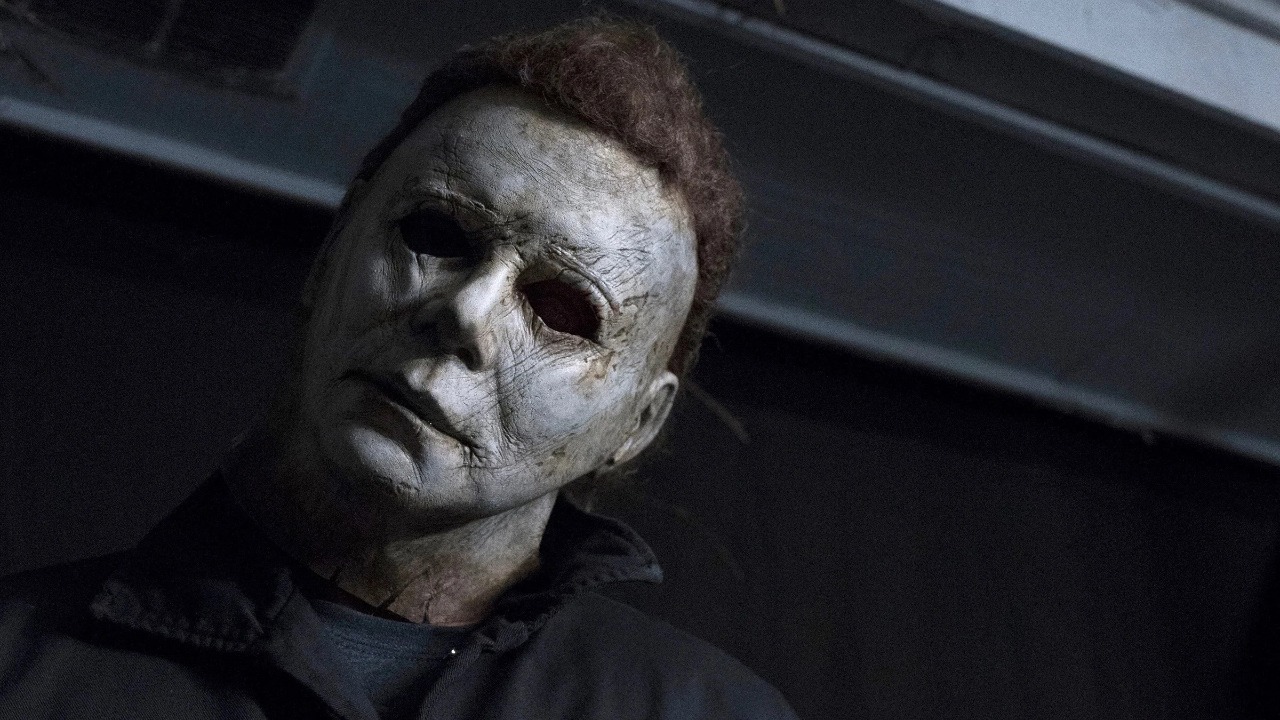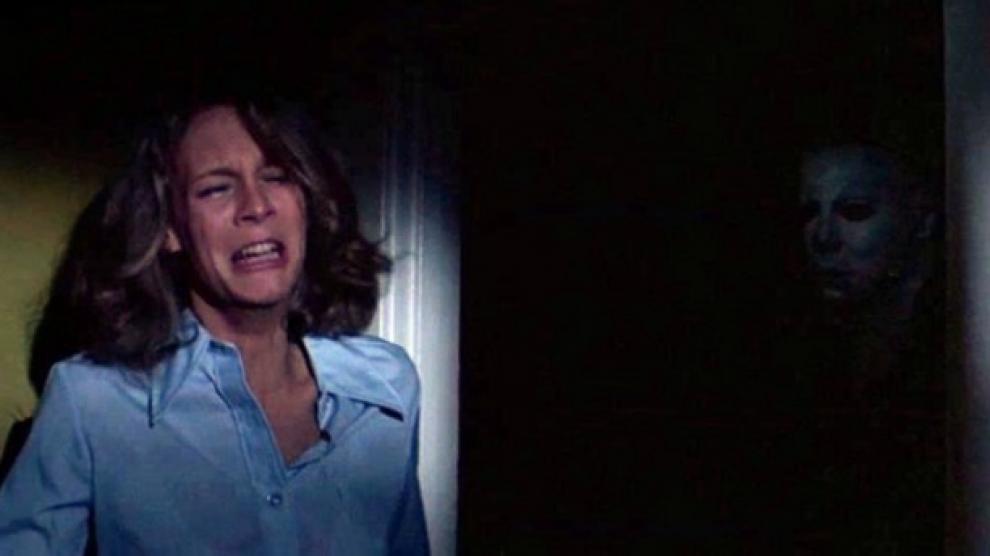Every Halloween movie ranked
Which Michael Myers movies should be on your Halloween list (in both senses of the word)?

An escaped mental patient in a sinister mask embarks on a killing spree in a quiet, unsuspecting suburbia. That simple premise forms the framework for John Carpenter's shoestring slasher Halloween, a box-office smash that birthed an iconic horror franchise (and catalyzed the rise of the slasher movie as a horror staple).
Over the course of 13 (!) movies, Michael Myers has stalked and slashed his way through victims, his legacy growing ever more elaborate as the series progresses. and sometimes (frequently) overwrites itself and ties itself in knots deciding what's canon and what isn't.
Considering the amount of films, the quality of these sequels naturally varies, from the downright awful to the exceptionally good. Happily, we've watched them all on your behalf, so settle in for our definitive look at every Halloween movie, ranked.
13. Halloween Resurrection (2002)
What should have ended with Halloween H20 is pointlessly continued several years later. Despite assurances from producers that the franchise would end the moment Laurie lops Michael’s head clean off with an ax, the fine print provided no such guarantee for the franchise's returning star Jamie Lee Curtis. Through a web of questionable retconning, Halloween Resurrection unpicks the best ending to the Michael and Laurie saga for a brief opening sequence that changes her entire character before she's unceremoniously killed.
The rest of the movie ignores that opening and follows a group of college kids who stay in the old Myers house on Halloween night. But why, you ask? To have their every move documented via a live webcast, of course! This achingly 2000s misfire struggles to appreciate what the purpose of the Halloween franchise is and wastes time with things that just aren't interesting. Case and point: the film's highlight is a sequence wherein Tyra Banks dances while making coffee.
12. Halloween 6: The Curse of Michael Myers (1995)
Do whatever you can to avoid this sequel which was plagued by production woes for six years. While its predecessor hinted at Michael's origin, the writers for this sequel were left with no notes as to what that might be, so moved forward with their own take. What results is a legacy sequel shaped like a direct-to-video thriller. Michael returns in his dogged efforts to eliminate his bloodline by stalking his niece's baby. Oh, and also, turns out Michael's murderous agenda? He's influenced by a cult.
The purpose of shoehorning in an external source to explain Michael's tendencies is a coin toss; you’ll either love it or hate it. And if you love young Paul Rudd, who appears as an older version of Halloween's Tommy Doyle, you may be in the former camp and willing to overlook the film's shortcomings. While its efforts are ambitious – it does at least attempt to do something new six entries in – the entire thing feels tedious on account of its lack of tension, lack of dread… it's just lacking.
Sign up for breaking news, reviews, opinion, top tech deals, and more.
11. Halloween Kills (2021)

The middle chapter in David Gordon Green's reboot trilogy divided audiences as soon as it hit theaters. His decision to break away from other timelines and craft a new universe feels like a convenient crutch, giving himself and writers a chance to pilfer and raid ideas from earlier, now non-canonical, entries. In that respect it's odd how strikingly similar this is to 1981's Halloween II. It resembles that sequel's continued night of carnage, its mass riot, and its hospital setting yet with none of the suspense or cunning. It's a shame this doesn't quite land, as it has some good ideas.
Looping in legacy characters we've not seen in years adds a nice touch. Anthony Michael Hall and Kyle Richards return as grown-up versions of the kids Laurie babysat in the original Halloween with Charles Cypher and Nancy Stephens reprising their roles from Carpenter's classic too. But their presence adds nothing beyond novelty, sadly. If the incessant shrieking of "Evil dies tonight!" hasn't worn you down by the time the credits roll, maybe the irrational motivations will.
10. Halloween 5: The Revenge of Michael Myers (1988)
It's easy to tell this was rushed into production and released a mere year after Halloween 4. While Carpenter famously penned the original in a short span, the creative minds here don’t possess his sense of style or panache. An 80s sequel so distinctly of its era, it's awash with bright, gaudy colours and overly-stylized fashion choices. Honestly, this feels like a mid-franchise Freddy sequel, from the music, interchangeable protagonists and the nonsensical plotting.
The movie picks up again with Michael stalking his niece, Jamie Lloyd, played again by Danielle Harris. It fumbles any semblance of terror through various baffling choices – the bulk of the movie takes place during the daytime, the sunny setting essentially eradicating Michael’s ability to terrify. Two cops the film deems bumbling are accompanied by buffoonish slide whistles, draining potential moments of intrigue and replacing them with slapstick. All of which could be forgiven, a sidestep into brazen camp perhaps, were the film to face its traumatized final girl, a nine year-old rendered mute by the horrific events of the previous movie. The scariest thing you’ll get from this is a headache from the final act’s endless shrieking.
9. Halloween (2007)
While the terrible Resurrection ended the original continuity, in the mid-2000s that little issue mattered not. The studio opted to return to the well and remake the 1978 original but with a wholly unique filmmaker at the helm – Rob Zombie. The result is a strange reimagining of Michael's origin, replacing his mysterious urge to kill with a somber, kitchen-sink backstory. Zombie's love of 1970s genre exploitation floods his remake of Carpenter's Halloween, so you have to applaud his differing approach.
Gone is the subtle creep, the gentle nuance of the boogeyman, replaced with brash, gaudy grue that stomps the life out of victims at the expense of any suspense. By the time that happens, you might find you don't care – the characters struggle to utter a line of dialogue without swearing, misogyny or sexual assault references. Grimehouse horror is the name of the game here for what's the bleakest entry in the franchise.
8. Halloween Ends (2022)

David Gordon Green wraps up his reboot trilogy with an ambitious take to round out the Laurie and Michael storyline once and for all. Set several years after the bloodbath finale of Halloween Kills, Laurie and her granddaughter Allyson are living together in Haddonfield with Michael missing in action. Ends is far less interested in rehashing the body count formula and opts instead for a franchise-first blend of loner romance and bloody action.
It straddles the redemption arc of a troubled outcast called Corey, who becomes entangled with Allyson, and Michael's emergence as a murderous mentor. Granted, some of its swings don't quite land. It doesn't make sense that this iteration of Laurie chooses to no longer fortify herself in a secure home with Michael on the loose at the outset, and its tone veers wildly from scene-to-scene. But for the most part this closing chapter succeeds.
7. Halloween 2 (2009)
Fans either love or hate Rob Zombie’s follow-up, a signifier of its extremes. Given free rein from the studio after the financial success of the first reboot, Halloween 2 shakes free any remnants of Carpenter’s story to tell a strange tale of Michael's continued bloodlust. This isn't another retread, though. This sequel involves visions of dead parents and dreams of ethereal horses. It's a fantastical flight of fancy – Zombie shrugging off the contractually-obligated remake shackles to craft the movie he'd wanted to make all along.
It ups the unflinching gore and despicable characters right out of the gate as Michael offs a gang of uncouth plebs with violent panache. Laurie's downward spiral after the murders of her friends also provides a new avenue for exploration. This isn't Jamie Lee Curtis' version of the character, after all. Taylor Scout-Compton makes the part her own as Laurie's PTSD is punctuated with fever dreams, flashes of her own fractured psyche that come to mirror Michael's. And the ending is truly something else.
6. Halloween III: Season of the Witch (1982)
Ah, the fan favorite with the earworm theme. John Carpenter and Debra Hill’s original plan for the franchise after Halloween II never involved Michael Myers. Because really, how could you better The Night He Came Home? This was to be the beginning of a fresh concept building onto the Halloween brand, kickstarting an anthology format of unconnected stories. Carpenter and Hill planned to use this concept to spotlight upcoming horror talent, spinning away from the established mythology. Heck, the point couldn’t be any clearer when we see the original Halloween playing on a TV several times.
While those anthology ambitions never came to fruition – fans wanted Myers – we're left with an orphaned sequel of sorts. Splintering from the timeline, Season of the Witch isn't even really a slasher. It works like a Terminator or Matrix progenitor, with hordes of suited cyborgs pursuing our two leads as they try to uncover the mystery of a shady Halloween mask company called Silver Shamrock. Sure, there's blood and gore, but the captivating boogeyman at the heart isn't a man but a corporation hellbent on resurrecting an ancient Celtic ritual.
5. Halloween (2018)

Blumhouse snagged the rights to Halloween and enlisted David Gordon Green to write and direct a sequel reboot of the series. Set 40 years after the events of the 1978 original, it ignores every other sequel even though it confusingly homages most of them. From the get-go, Halloween effectively sets the scene, making it easy for anyone to dive in whether or not they know the franchise's history. Part reboot, part sequel – a requel, dare we say? – Halloween creates the same atmosphere as the original but with a larger ensemble cast.
Jamie Lee Curtis returns as Laurie in full-on doomsday prepper mode, ready to protect her family and confront Michael as he's moved to a new psychiatric hospital on Halloween night. Haddonfield bears echoes of the same town last seen in 1978, affected by the events of Michael's first spree but not enough to prevent a new massacre. Bloodier than before, a string of tense setpieces prove shocking in their simplicity. One set around a garden sensor light is particularly effective, but it's the ease at which he slips into unguarded homes, hiding in closets, creeping into living rooms, that creates the most unease.
4. Halloween 4 (1988)
The same story as the original set 10 years later. A soft reboot, if you will. Halloween 4 marks the return of Michael Myers to a franchise for a sequel which ranks higher than its successors. The logistics of Michael’s return, i.e – he’s back because it’s exactly a decade to the night of the last killing spree – is a frustrating convenience, but regardless, the movie is a sterling example of a sequel done right.
The torch is passed on to the now-dead Laurie Strode’s daughter Jamie (Danielle Harris), who is the target of the pointy end of a butcher knife. Now in foster care, it’s those closest to her who become body count fodder as Michael stalks her across Haddonfield. The general premise keeps it straightforward as a new set of teens confront Michael in their attempts to protect Jamie. This entry marks the point at which the series changes its emphasis to action over chills, which works, as it's easier to master than Carpenter’s signature, singular dread. The film's brisk runtime culminates in the best cliffhanger ending of the franchise.
3. Halloween II (1981)
The first sequel follows on directly from the events of Halloween, even brandishing the tagline "More of the night He came home". Weirdly, John Carpenter's dislike of sequels didn't stop his involvement as producer, composer, and writer. It was his and co-writer Debra Hill’s decision to ramp up the gore and grue, making this one of Michael’s most brutal escapades. He scalds the face from a woman, dunking her over and over into boiling water, and later exsanguinates a nurse, her blood flooding an entire room.
Aside from the fact it sidelines Laurie Strode until the last act, it remains creepy – the empty hallways of Haddonfield Memorial an isolated hunting ground for Myers to pick off staff and patients. The final chase between Laurie and Michael, telegraphed by a remixed version of Carpenter’s original score, is one of the best in the series. And it's made all the more evocative thanks to the work of returning cinematographer (and all-time great) Dean Cundey; Michael’s figure emerges from shadowy doorways and slips out of frame, barely visible on murky CCTV screens. The close-up on his bloody tears dripping down his masked visage creates one of the franchise's most indelible images.
2. Halloween H20 (1998)
Unapologetically of its time, Halloween H20 is a product of the post-Scream era of self-aware horror with writer Kevin Williamson even drafting the initial treatment. While some of his concepts were whittled away during rewrites – he championed the idea of acknowledging Laurie's daughter Jamie – it's got his stamp all over it, as precocious teens spew knowing dialogue before getting offed in exquisite setpieces.
This legacy sequel rekindles Michael Myers from the ashes and brings Laurie Strode back into the fold, this time bearing the new identity of boarding school principal, Keri Tate. Laurie's trauma receives its most realistic depiction yet as she hides her alcoholism and past from her new partner, and loses her cool with her son, John (Josh Hartnett). The movie's brisk runtime makes it an easy watch with a sublime third act that delivers the best Michael-Laurie finale of the franchise – and there are several to choose from. Laurie wielding an axe, screaming for Michael as the original score plays is chill-inducing. H20 is one hell of a slasher showdown.
1. Halloween (1978)

Carpenter's original remains the best for its simplicity. No gimmicks, no origin story, no explanations. This Michael Myers is devoid of reasoning, just a shape with a desire to kill. Shot on a budget of around $300,000 with a plot so concise it fit on a napkin, Carpenter collaborated with producer Debra Hill on the screenplay. The pair took normal, everyday scenarios and transformed them into tableaus of terror as a teenage girl is stalked by an escaped killer. In the hands of Carpenter, there's no need for added theatrics, his directorial eye, shot composition and soundtrack meld together beautifully to capture Laurie's fear. Each glimpse of Michael adding further unease, gently threading tension until it explodes in the third act.
It went on to become a colossal hit, making around $70 million worldwide (which would be over $300 million today…) and earning solid critical acclaim at time of release. No wonder that it spawned a mammoth franchise, then, but none of its successors have ever come close to capturing its visceral terror. The film's parting shots are more frightful than most of its sequels, reboots, and remakes: a locked-off camera shows the Doyle household, the view across the street to the Wallace house, the back yards, all empty, except for shadows pooling in the corners of frames and the sound of Michael's steady breathing, a warning of what's to come.
You might also like
- 13 great horror movies new on Netflix, Hulu and more to stream in October 2023
- Netflix’s The Fall of of the House of Usher is a terrifyingly good treat for this Friday 13th
- Prime Video's new horror movie is Totally Killer with no filler – and so are these 6 great slasher films

Gem Seddon is a Seattle-based freelance entertainment writer with bylines at Vulture, Digital Spy, TechRadar, GamesRadar+, Total Film, What to Watch, and Certified Forgotten. Librarian by day, scribbler by night, Gem loves 90-minute movies, time travel romance, single-camera comedy shows, all things queer, all things horror, and queer horror. Alien and Scream are tied as her all-time favourite movie. She won't stop raving about Better Things.